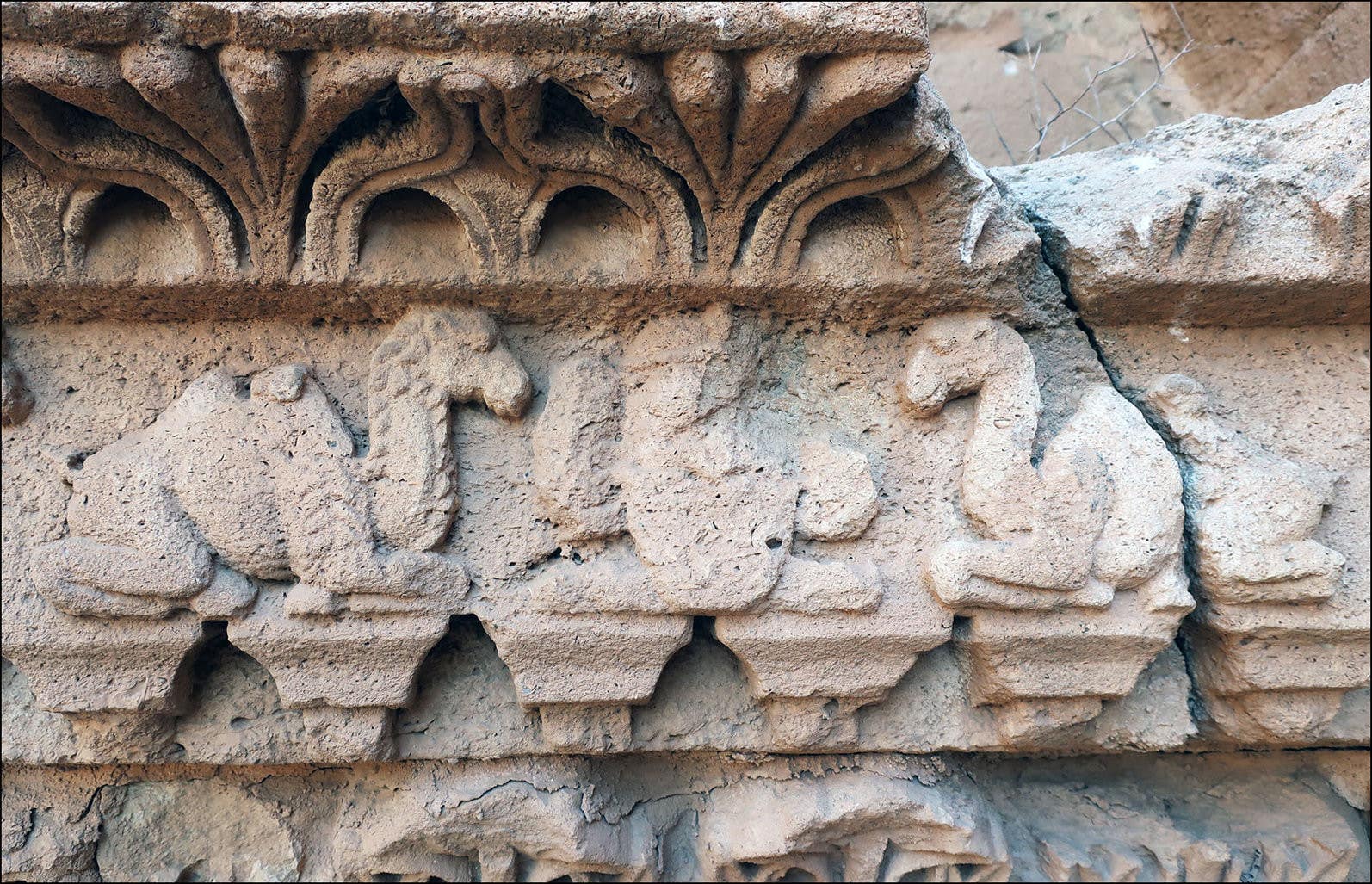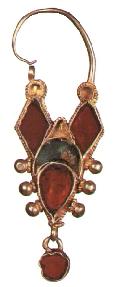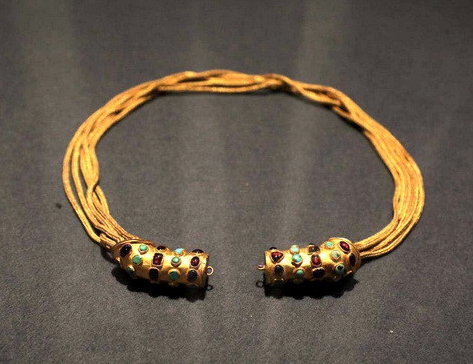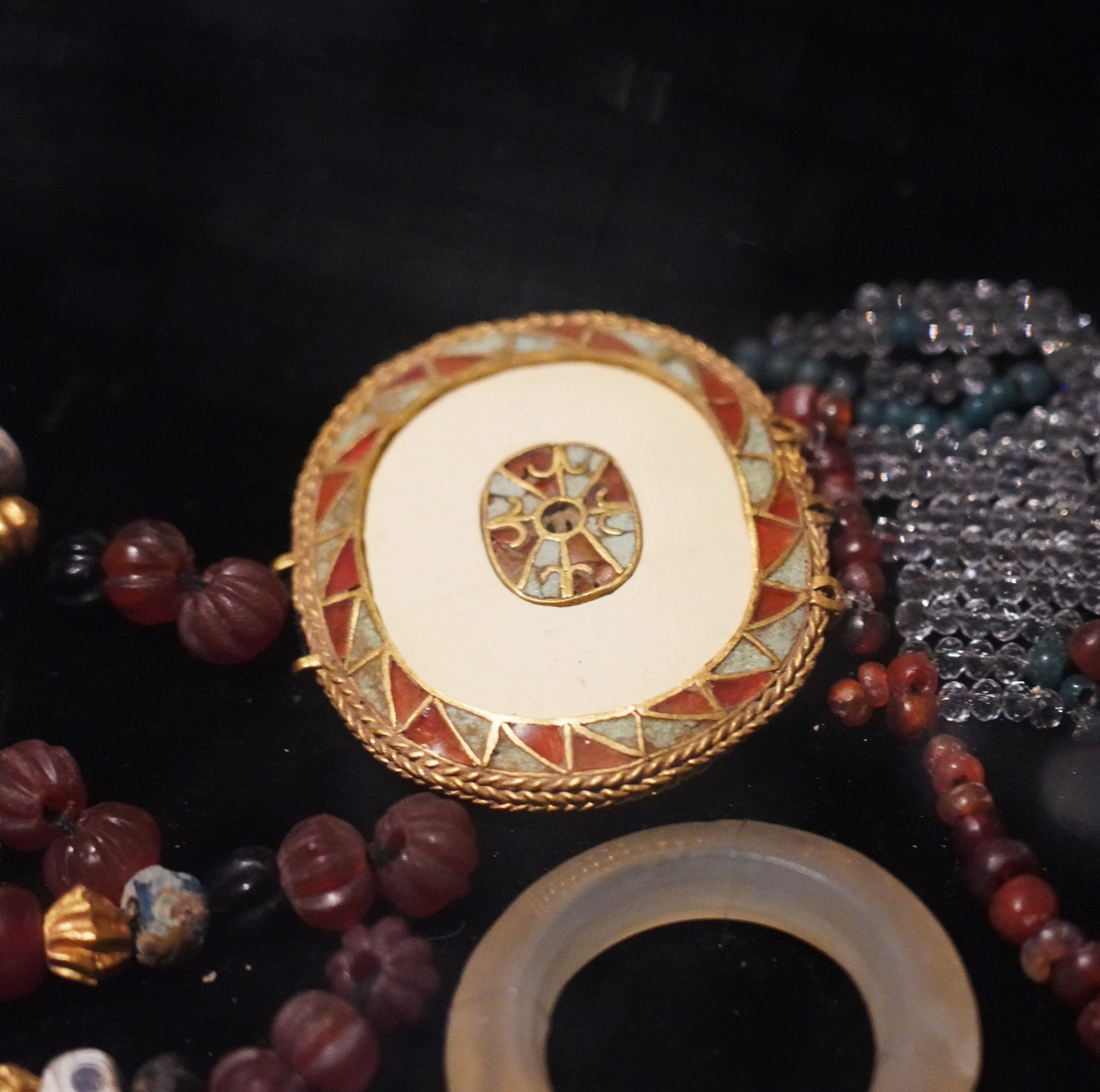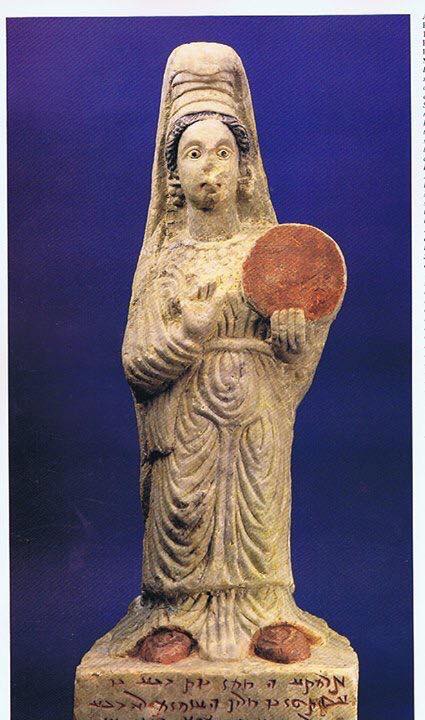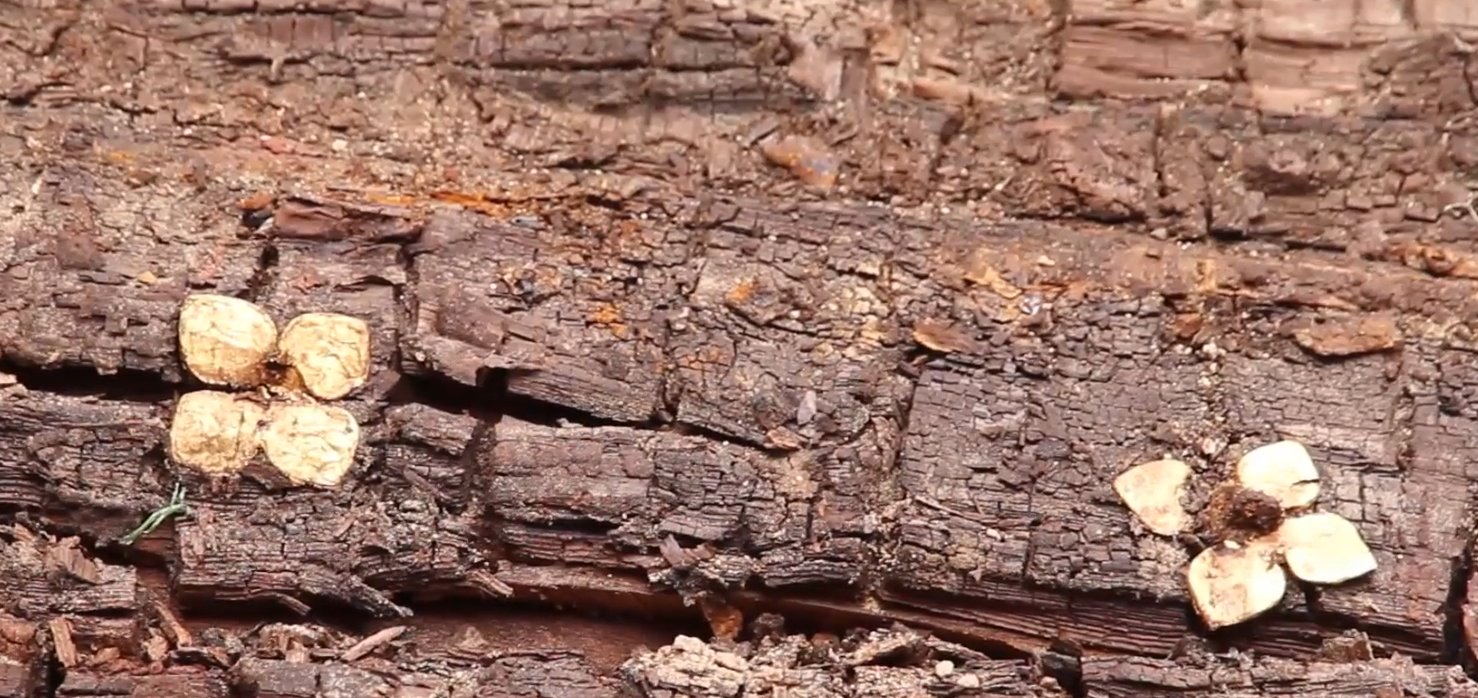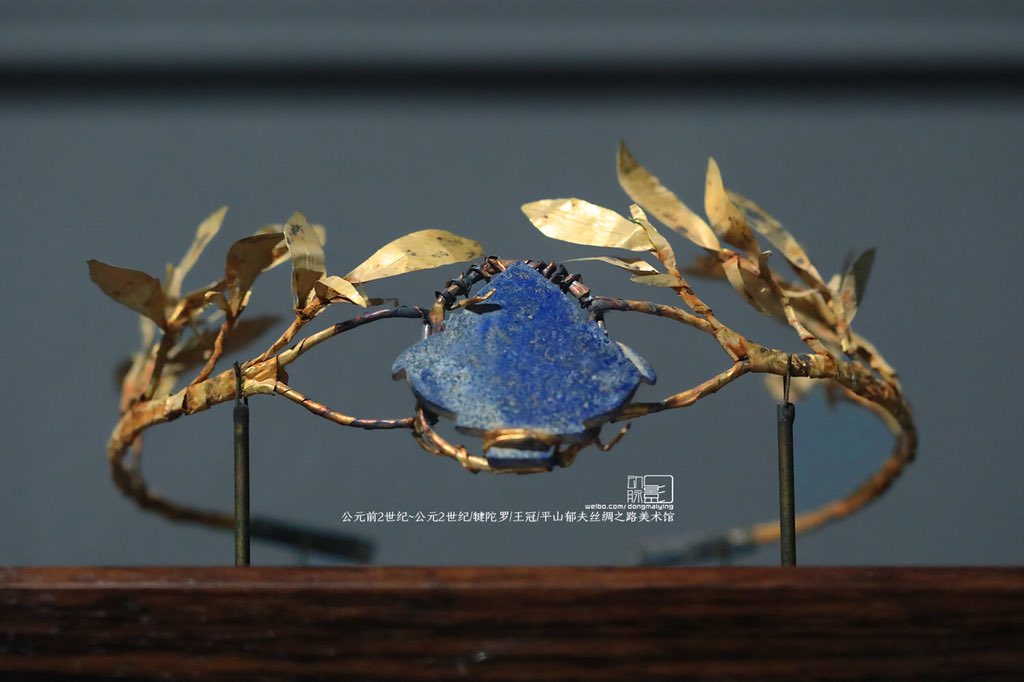“The use of red garnets in ancient craft industries, primarily as beads, is attested in Egypt from the Predynastic period through the New Kingdom (i.e., 4th–2nd millennium BC), and in some Western Asiatic and Near Eastern cultures of the 2nd–1st millennium BC. Their early use was sporadic at best, but trade in gems from distant sources, including garnets, proliferated in the Hellenistic era under the successors of Alexander the Great” [Lisbet Thoresen, Greek, Etruscan, Roman garnets]
| The splendour of power. Early medieval kingship and the use of gold and silver in the southern North Sea area (5th to 7th century) https://www.academia.edu |
| Jewels with Stone Inlays from Hatra, Enrico Foietta, 2014 |
| PARTHIAN AND EARLY SASANIAN EARRINGS WITH GARNET INLAY Dieter Quast https://www.academia.edu |
| Garnet Inlays in the Light of the Armaziskhevi Dagger Hilt [Hatra, Georgia] Noel Adams https://www.academia.edu |
| OF MEN AND MUSHROOMS [examples of garnet cloisonné incorporating so-called ‘mushroom’ cells] Noel Adams https://www.academia.edu |
| Rethinking the Sutton Hoo Shoulder Clasps and Armour Noel Adams https://www.academia.edu/2614655/Rethinking_the_Sutton_Hoo_Shoulder_Clasps_and_Armour |
| ARCHAEOMETRIC INVESTIGATION OF GARNET JEWELLERY Archaeological material from Hungary (late 6th- and 7th-century) https://zellwerk.hypotheses.org/123 [an important website, garnet jewelry] |
| Greek, Etruscan and Roman garnets in the antiquities collection of the J. Paul Getty Museum Lisbet Thoresen, Temecula, CA, USA https://www.academia.edu |


Artefacts with inlays featuring Style В (according to Adams 2000). 1 – Hatra (Iraq); 2 – Shamsi (Kirghizia);
3 – Armaziskhevi (Georgia); 4 – Simleul Silvaniei (Romania; according to Mastykova 2007, fig. 10).
[Mastykova, Anna 2020]
Mastykova, Anna 2020. The Neck-Ring Grave in the Cemetery of Klin-Yar and Its Place in the Hierarchy of Privileged Women’s Burials from the Great Migration Period in the North Caucasus. In Slovak Archaeology , vol. LXVIII, no. 1, pp. 69-81. 1335-0102. DOI: https://doi.org/10.31577/slovarch.2020.68.4
Read also >> Jewelry and grave goods from the 4th-5th century Shamsi burial ground in Chui Valley, Kyrgyzstan
http://colorsandstones.eu/2022/05/01/shamsi-burial-ground-chui-valley-kyrgyzstan-4th-5th-c/
| Orsolya Heinrich-Tamáska Finds decorated with garnets from Early Avar contexts in the light of their cell techniques https://edoc.hu-berlin.de |
| PURE GOLD WITH POOR WORKMANSHIP – SOME UNUSUAL PIECES OF POLYCHROME METALWORK FROM THE 5TH-CENTURY CARPATHIAN BASIN http://www.ace.hu/am/2019_1/AM-2019-1-HE.pdf |
| Garnet Trade in Early Medieval Europe: The Italian Network https://www.researchgate.net |

AN OUTSTANDING JEWEL COLLAR FROM THE CEMETERY OF KESZTHELY-FENÉKPUSZTA-HORREUM (SOUTH-WEST HUNGARY)
https://zellwerk.hypotheses.org/717
Photo:
Keszthely-Fenékpuszta-Horreum (Hungary), grave 5, jewel collar, back-side

